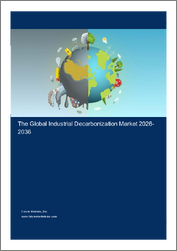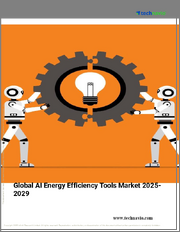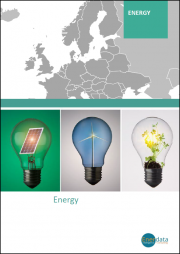
|
시장보고서
상품코드
1675463
세계의 산업 에너지 효율화 서비스 시장 : 유형별, 용도별, 지역별(2025-2033년)Industrial Energy Efficiency Services Market by Type, Application, and Region 2025-2033 |
||||||
산업 에너지 효율화 서비스 시장 세계 시장 규모는 2024년 129억 달러에 달했습니다. 향후 IMARC Group은 2033년에는 186억 달러에 달할 것으로 예상하며, 2025-2033년 연평균 성장률(CAGR)은 3.91%를 나타낼 것으로 전망하고 있습니다. 전 세계 대기 오염 수준 증가, 환경 영향 및 지속가능성에 대한 인식 증가, 많은 국가 정부의 엄격한 에너지 효율 기준 도입은 시장을 주도하는 주요 요인 중 하나입니다.
에너지 효율화 서비스(EES)는 산업 시설이 에너지 소비를 최적화하기 위해 새로운 기술 및 기타 조치를 도입할 수 있도록 지원합니다. EES 제공업체가 일반적으로 제공하는 서비스에는 소프트웨어 솔루션, 감사 및 컨설팅, 계약, 효율적인 운영, 기술 엔지니어링, 조달 및 시공 등이 포함됩니다. 등이 있습니다. 최근 산업 에너지 효율화 서비스는 에너지와 비용을 크게 절감하고 기업이 엄격한 정부 규제를 준수할 수 있도록 지원함으로써 전 세계 많은 산업 분야에서 큰 호응을 얻고 있습니다.
산업 에너지 효율화 서비스 시장 동향 :
대기 오염 수준이 크게 증가하고 최근 환경 보호 및 보존에 대한 관심이 높아짐에 따라 기업들은 지속 가능한 개발 방법을 채택하고 환경 친화적인 에너지원을 선택하는 데 주력하고 있습니다. 이는 다양한 산업 시설의 내부 작업 및 공정의 에너지 효율을 개선할 필요성이 증가함에 따라 시장 성장을 가속하는 주요 요인이 되고 있습니다. 이와 더불어, 환경에 미치는 영향과 지속가능성에 대한 인식이 높아지면서 에너지 효율이 높은 기술의 개발 및 활용이 증가하고 있습니다. 또한, 에너지 효율적인 산업 시스템의 사용이 증가하고 연료 소비와 배출량이 감소하고 있는 것도 시장 전망을 밝게 하고 있습니다. 또한 각국 정부는 에너지 안보, 대기오염, 탈탄소화에 대한 엄격한 규제를 도입하고 있습니다. 특히 화학, 금속가공, 광업, 석유정제, 화석연료를 사용하는 발전소 등 에너지 다소비 부문에서 에너지 효율화 조치의 이행을 보장하기 위한 자문위원회, 징계위원회, 조사위원회 설치가 진행되고 있습니다. 이에 따라 산업 부문은 규제 준수를 보장하기 위해 에너지 효율화 서비스를 도입하게 되었습니다. 또한, 기존 화석연료의 고갈, 환경 문제, 연료 수입으로 인한 경제적 부담 증가로 인해 재생에너지 소비가 크게 증가하고 있습니다. 이에 따라 종합적인 에너지 안보를 확보할 필요성이 높아지면서 단일 또는 소수의 에너지원에 대한 의존도를 낮추기 위해 에너지원의 다변화가 진행되고 있으며, 이는 시장 성장을 견인하고 있습니다. 이 외에도 에너지 부문의 확대, 에너지 감사 및 에너지 효율 기준 준수를 의무화하는 정부 이니셔티브 증가, 청정 에너지로의 전환 진행, 급속한 산업화, 기술 발전 등도 시장 성장을 가속하고 있습니다.
본 보고서에서 다룬 주요 질문
- 세계 산업 에너지 효율화 서비스 시장 규모는?
- 2025-2033년 세계 산업 에너지 효율화 서비스 시장의 예상 성장률은?
- 세계 산업 에너지 효율화 서비스 시장을 이끄는 주요 요인은?
- 코로나19가 세계 산업 에너지 효율화 서비스 시장에 미치는 영향은?
- 세계 산업 에너지 효율화 서비스 시장의 주요 지역은?
- 세계 산업 에너지 효율화 서비스 시장의 주요 기업은?
목차
제1장 서문
제2장 조사 범위와 조사 방법
- 조사 목적
- 이해관계자
- 데이터 소스
- 1차 정보
- 2차 정보
- 시장 추정
- 보텀업 접근
- 톱다운 접근
- 조사 방법
제3장 주요 요약
제4장 서론
- 개요
- 주요 업계 동향
제5장 세계의 산업 에너지 효율화 서비스 시장
- 시장 개요
- 시장 실적
- COVID-19의 영향
- 시장 예측
제6장 시장 분석 : 유형별
- 에너지 감사 또는 컨설팅
- 제품 및 시스템 최적화
- 감시 및 검증
제7장 시장 분석 : 용도별
- 석유화학
- 화학
- 전력
- 텍스타일
- 건축자재
- 광업
제8장 시장 분석 : 지역별
- 북미
- 미국
- 캐나다
- 아시아태평양
- 중국
- 일본
- 인도
- 한국
- 호주
- 인도네시아
- 기타
- 유럽
- 독일
- 프랑스
- 영국
- 이탈리아
- 스페인
- 러시아
- 기타
- 라틴아메리카
- 브라질
- 멕시코
- 기타
- 중동 및 아프리카
- 시장 내역 : 국가별
제9장 촉진요인 및 억제요인·기회
- 개요
- 성장 촉진요인
- 성장 억제요인
- 기회
제10장 밸류체인 분석
제11장 Porter의 Five Forces 분석
- 개요
- 바이어의 교섭력
- 공급 기업의 교섭력
- 경쟁 정도
- 신규 진출업체의 위협
- 대체품의 위협
제12장 가격 분석
제13장 경쟁 구도
- 시장 구조
- 주요 기업
- 주요 기업 개요
- DuPont de Nemours Inc.
- Enel Spa
- Engie SA
- General Electric Company
- Honeywell International Inc.
- Johnson Controls International Plc
- Schneider Electric Srbija D.O.O.
- SGS SA
- Siemens Aktiengesellschaft
- Veolia Environment
The global industrial energy efficiency services market size reached USD 12.9 Billion in 2024. Looking forward, IMARC Group expects the market to reach USD 18.6 Billion by 2033, exhibiting a growth rate (CAGR) of 3.91% during 2025-2033. The rising air pollution levels worldwide, growing awareness regarding environmental impact and sustainability, and the implementation of strict energy efficient standards by governments of numerous countries represent some of the key factors driving the market.
Energy efficiency services (EES) help industrial facilities implement new technologies and other measures to optimize energy consumption. These services aid in lowering the amount of energy used and reducing costs while ensuring operational efficiency. Some commonly offered services by EES providers include software solutions, audit and consulting, contracting, efficient operations, and engineering, procurement, and construction of technology. In recent years, industrial energy efficiency services have gained immense traction in numerous industries across the globe as they offer substantial energy and cost savings and assist companies in ensuring compliance with strict government regulations.
Industrial Energy Efficiency Services Market Trends:
As a result of the significant rise in air pollution levels and the recent shift toward environmental protection and conservation, businesses are focusing on adopting sustainable development practices and opting for eco-friendly energy sources. This, coupled with the surging need to improve the energy efficiency of internal operations and processes across various industrial facilities, represents the primary factor driving the market growth. Besides this, the growing awareness regarding environmental impact and sustainability has led to the development and use of energy-efficient technologies. Moreover, the rising utilization of energy-efficient industrial systems, resulting in lower fuel consumption and fewer emissions, is creating a positive outlook for the market. Additionally, governments of various nations are introducing stringent regulations pertaining to energy security, air pollution, and decarbonization. They are also setting up advisory, disciplinary, and investigatory boards to ensure the implementation of energy efficiency measures, especially across energy-intensive sectors, including chemicals, metal processing, mining, petroleum refining, and fossil-fuel-powered electricity plants. This, in turn, has prompted the industrial sector to adopt energy efficiency services to ensure regulatory compliance. Furthermore, there is a significant surge in renewable energy consumption owing to depleting conventional fossil fuel sources, growing environmental concerns, and the rising economic burden of importing fuel commodities. In line with this, the escalating need to ensure total energy security has led to the diversification of energy sources to reduce dependence on a single or few energy sources, which in turn is propelling market growth. Other factors, including the expanding energy sector, rising government initiatives mandating companies to undertake energy audits and comply with energy efficiency standards, the ongoing shift toward clean energy, rapid industrialization, and technological advancements, are also providing a positive thrust to the market growth.
Key Market Segmentation:
Type Insights:
- Energy Auditing or Consulting
- Product and System Optimization
- Monitoring and Verification
Application Insights:
- Petrochemical
- Chemical Industry
- Electric Power
- Textile
- Building Materials
- Mining
Regional Insights:
- North America
- United States
- Canada
- Asia-Pacific
- China
- Japan
- India
- South Korea
- Australia
- Indonesia
- Others
- Europe
- Germany
- France
- United Kingdom
- Italy
- Spain
- Russia
- Others
- Latin America
- Brazil
- Mexico
- Others
- Middle East and Africa
- The report has also provided a comprehensive analysis of all the major regional markets, which include North America (the United States and Canada); Asia-Pacific (China, Japan, India, South Korea, Australia, Indonesia, and others); Europe (Germany, France, the United Kingdom, Italy, Spain, Russia, and others); Latin America (Brazil, Mexico, and others); and the Middle East and Africa. According to the report, North America was the largest market for industrial energy efficiency services. Some of the factors driving the North America industrial energy efficiency services market included rapid growth in the industrial sector, increasing adoption of energy-efficient industrial systems, stringent government standards regarding energy efficiency, etc.
Competitive Landscape:
- The report has also provided a comprehensive analysis of the competitive landscape in the global industrial energy efficiency services market. Detailed profiles of all major companies have been covered, including DuPont de Nemours Inc., Enel Spa, Engie SA, General Electric Company, Honeywell International Inc., Johnson Controls International Plc, Schneider Electric Srbija D.O.O., SGS SA, Siemens Aktiengesellschaft, Veolia Environment, etc. Kindly note that this only represents a partial list of companies, and the complete list has been provided in the report.
Key Questions Answered in This Report
- 1.How big is the global industrial energy efficiency services market?
- 2.What is the expected growth rate of the global industrial energy efficiency services market during 2025-2033?
- 3.What are the key factors driving the global industrial energy efficiency services market?
- 4.What has been the impact of COVID-19 on the global industrial energy efficiency services market?
- 5.What are the key regions in the global industrial energy efficiency services market?
- 6.Who are the key players/companies in the global industrial energy efficiency services market?
Table of Contents
1 Preface
2 Scope and Methodology
- 2.1 Objectives of the Study
- 2.2 Stakeholders
- 2.3 Data Sources
- 2.3.1 Primary Sources
- 2.3.2 Secondary Sources
- 2.4 Market Estimation
- 2.4.1 Bottom-Up Approach
- 2.4.2 Top-Down Approach
- 2.5 Forecasting Methodology
3 Executive Summary
4 Introduction
- 4.1 Overview
- 4.2 Key Industry Trends
5 Global Industrial Energy Efficiency Services Market
- 5.1 Market Overview
- 5.2 Market Performance
- 5.3 Impact of COVID-19
- 5.4 Market Forecast
6 Market Breakup by Type
- 6.1 Energy Auditing or Consulting
- 6.1.1 Market Trends
- 6.1.2 Market Forecast
- 6.2 Product and System Optimization
- 6.2.1 Market Trends
- 6.2.2 Market Forecast
- 6.3 Monitoring and Verification
- 6.3.1 Market Trends
- 6.3.2 Market Forecast
7 Market Breakup by Application
- 7.1 Petrochemical
- 7.1.1 Market Trends
- 7.1.2 Market Forecast
- 7.2 Chemical Industry
- 7.2.1 Market Trends
- 7.2.2 Market Forecast
- 7.3 Electric Power
- 7.3.1 Market Trends
- 7.3.2 Market Forecast
- 7.4 Textile
- 7.4.1 Market Trends
- 7.4.2 Market Forecast
- 7.5 Building Materials
- 7.5.1 Market Trends
- 7.5.2 Market Forecast
- 7.6 Mining
- 7.6.1 Market Trends
- 7.6.2 Market Forecast
8 Market Breakup by Region
- 8.1 North America
- 8.1.1 United States
- 8.1.1.1 Market Trends
- 8.1.1.2 Market Forecast
- 8.1.2 Canada
- 8.1.2.1 Market Trends
- 8.1.2.2 Market Forecast
- 8.1.1 United States
- 8.2 Asia-Pacific
- 8.2.1 China
- 8.2.1.1 Market Trends
- 8.2.1.2 Market Forecast
- 8.2.2 Japan
- 8.2.2.1 Market Trends
- 8.2.2.2 Market Forecast
- 8.2.3 India
- 8.2.3.1 Market Trends
- 8.2.3.2 Market Forecast
- 8.2.4 South Korea
- 8.2.4.1 Market Trends
- 8.2.4.2 Market Forecast
- 8.2.5 Australia
- 8.2.5.1 Market Trends
- 8.2.5.2 Market Forecast
- 8.2.6 Indonesia
- 8.2.6.1 Market Trends
- 8.2.6.2 Market Forecast
- 8.2.7 Others
- 8.2.7.1 Market Trends
- 8.2.7.2 Market Forecast
- 8.2.1 China
- 8.3 Europe
- 8.3.1 Germany
- 8.3.1.1 Market Trends
- 8.3.1.2 Market Forecast
- 8.3.2 France
- 8.3.2.1 Market Trends
- 8.3.2.2 Market Forecast
- 8.3.3 United Kingdom
- 8.3.3.1 Market Trends
- 8.3.3.2 Market Forecast
- 8.3.4 Italy
- 8.3.4.1 Market Trends
- 8.3.4.2 Market Forecast
- 8.3.5 Spain
- 8.3.5.1 Market Trends
- 8.3.5.2 Market Forecast
- 8.3.6 Russia
- 8.3.6.1 Market Trends
- 8.3.6.2 Market Forecast
- 8.3.7 Others
- 8.3.7.1 Market Trends
- 8.3.7.2 Market Forecast
- 8.3.1 Germany
- 8.4 Latin America
- 8.4.1 Brazil
- 8.4.1.1 Market Trends
- 8.4.1.2 Market Forecast
- 8.4.2 Mexico
- 8.4.2.1 Market Trends
- 8.4.2.2 Market Forecast
- 8.4.3 Others
- 8.4.3.1 Market Trends
- 8.4.3.2 Market Forecast
- 8.4.1 Brazil
- 8.5 Middle East and Africa
- 8.5.1 Market Trends
- 8.5.2 Market Breakup by Country
- 8.5.3 Market Forecast
9 Drivers, Restraints, and Opportunities
- 9.1 Overview
- 9.2 Drivers
- 9.3 Restraints
- 9.4 Opportunities
10 Value Chain Analysis
11 Porters Five Forces Analysis
- 11.1 Overview
- 11.2 Bargaining Power of Buyers
- 11.3 Bargaining Power of Suppliers
- 11.4 Degree of Competition
- 11.5 Threat of New Entrants
- 11.6 Threat of Substitutes
12 Price Analysis
13 Competitive Landscape
- 13.1 Market Structure
- 13.2 Key Players
- 13.3 Profiles of Key Players
- 13.3.1 DuPont de Nemours Inc.
- 13.3.1.1 Company Overview
- 13.3.1.2 Service Offered
- 13.3.1.3 Financials
- 13.3.1.4 SWOT Analysis
- 13.3.2 Enel Spa
- 13.3.2.1 Company Overview
- 13.3.2.2 Service Offered
- 13.3.2.3 Financials
- 13.3.2.4 SWOT Analysis
- 13.3.3 Engie SA
- 13.3.3.1 Company Overview
- 13.3.3.2 Service Offered
- 13.3.3.3 Financials
- 13.3.3.4 SWOT Analysis
- 13.3.4 General Electric Company
- 13.3.4.1 Company Overview
- 13.3.4.2 Service Offered
- 13.3.4.3 Financials
- 13.3.4.4 SWOT Analysis
- 13.3.5 Honeywell International Inc.
- 13.3.5.1 Company Overview
- 13.3.5.2 Service Offered
- 13.3.5.3 Financials
- 13.3.5.4 SWOT Analysis
- 13.3.6 Johnson Controls International Plc
- 13.3.6.1 Company Overview
- 13.3.6.2 Service Offered
- 13.3.7 Schneider Electric Srbija D.O.O.
- 13.3.7.1 Company Overview
- 13.3.7.2 Service Offered
- 13.3.8 SGS SA
- 13.3.8.1 Company Overview
- 13.3.8.2 Service Offered
- 13.3.8.3 Financials
- 13.3.8.4 SWOT Analysis
- 13.3.9 Siemens Aktiengesellschaft
- 13.3.9.1 Company Overview
- 13.3.9.2 Service Offered
- 13.3.9.3 Financials
- 13.3.9.4 SWOT Analysis
- 13.3.10 Veolia Environment
- 13.3.10.1 Company Overview
- 13.3.10.2 Service Offered
- 13.3.10.3 Financials
- 13.3.10.4 SWOT Analysis
- 13.3.1 DuPont de Nemours Inc.
Kindly note that this only represents a partial list of companies, and the complete list has been provided in the report.



















